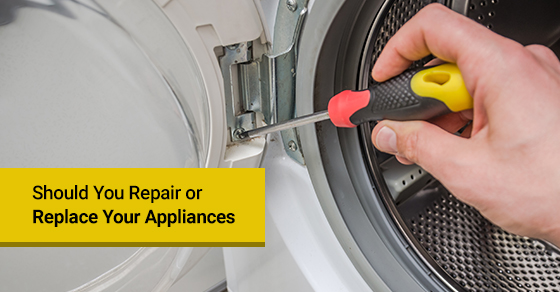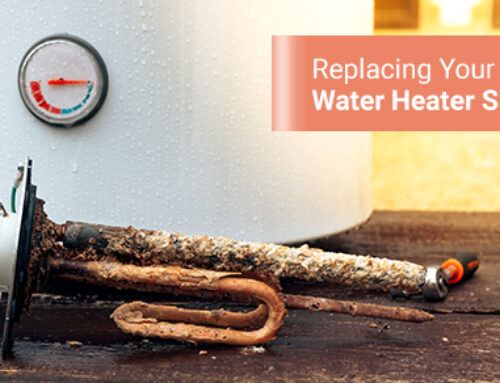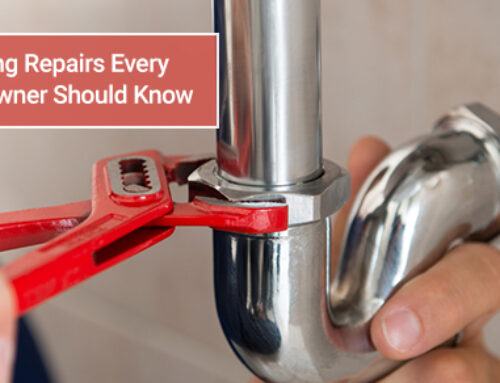Before thinking about purchasing a new appliance every time it fails to function as expected, there are plenty of fixes that can help your dishwasher, fridge, washer, and dryer last for years. How can you tell when your appliance can be saved with a quick fix or if it’s finally time to replace it? When making this decision, you should consider how long you’ve had the appliance and what the cost of repairing it would be, versus how much it would cost to replace. A good rule of thumb to follow is that if the repair will cost half the amount of replacing it, it’s time to call it quits.
If you’ve decided to take a stab at repairing your appliance, check out these tips on how to fix common issues with home appliances.
Your Fridge isn’t Cold Enough
First, consider checking the obvious: Are the temperatures adjustment controls knocked and set too high?
The next alternative is cleaning the gasket. If it doesn’t seal properly, the chances are cool air is escaping. You should use warm soapy water to clean it, then rinse and dry well. Check the seal for several spots by using a dollar bill and shutting the door on it. If the bill slips out, consider using a hair dryer to keep the gasket warm and reformed.
Next, try cleaning the coil. Coils are located behind or below the machine, and won’t be able to cool your fridge if they’re clogged with dust and other debris. Unplug your refrigerator and open the grate. Use the vacuum cleaner horse with a long handle brush to clean the coil. This process should be repeated severally within a year, especially if you want to minimize electric bills.
The Icemaker is Inconsistent
First off, remember that it takes about 90 minutes for most refrigerators to produce another batch of ice. If it takes significantly longer, you may need to change your water filter located inside the fridge compartment. Consult your refrigerator’s manual to learn how to replace it.
Your Dishwasher is Leaving Behind Water Spots and Food Residue
If your dishwasher is leaving food residue on the plates, you could be having a couple of issues. First, you may need to replace the filter that catches the food debris. If you’re using a gel detergent, it may have gummed up the filter. The other issue could be that you’re loading cleaning dishes. The new machines use sensors to determine the soil of every load, so when you pre-rinse dishes your machine may not run a full cycle.
If you have been noticing water spots on your dishes after they’ve been washed, you might be out of the rinse aid. A rinse aid goes into the dispenser, changes the water’s surface tension in order to sheet off, enabling plate dry better. Adding more detergents can help if you use hard water, and try to use a drying cycle instead of allowing your dishes to air dry.
Your Laundry Machine Smells
Residual moisture gets trapped inside the machine, which can cause a funky smell. To get rid of the odour, start by drying the door and the gasket, and sop up excess water at the bottom part of the tap once you’ve completed a full cycle. Ensure you leave the door open to allow air circulation.
If this doesn’t help, the unpleasant odour may be caused by too much detergent. Ensure you use the right amount of soap and limit the use of fabric softeners because they can stick to the machine, and contribute to this problem.
Your Laundry Machine is Overfilling
If you find that your machine fills up with too much water, you may have a defective inlet valve. To replace your inlet valve, first disconnect your washer from the power source. Remove the defective valve, disconnecting it from the water line and other water supply hoses. Simply connect the new inlet valve by securing it with screws if necessary, and reconnect the water supply.
Your Dryer is Taking Too Long
You may be having a lint problem. Before attempting to fix your dryer, clean out the back part of the unit and the vent. Purchase a brush snake or even use a vacuum cleaner hose to suck or pull out the lint debris. The filter should be cleared after every use.
If your dryer runs for a while and you notice it’s not heating up, your thermal fuse may be broken and should be replaced. Consult the user manual for your specific unit to learn how to properly replace this piece.
To learn more about how we can help you repair your home appliance, 1-877-631-0622 or email installations2@imagineplumbing.com.




